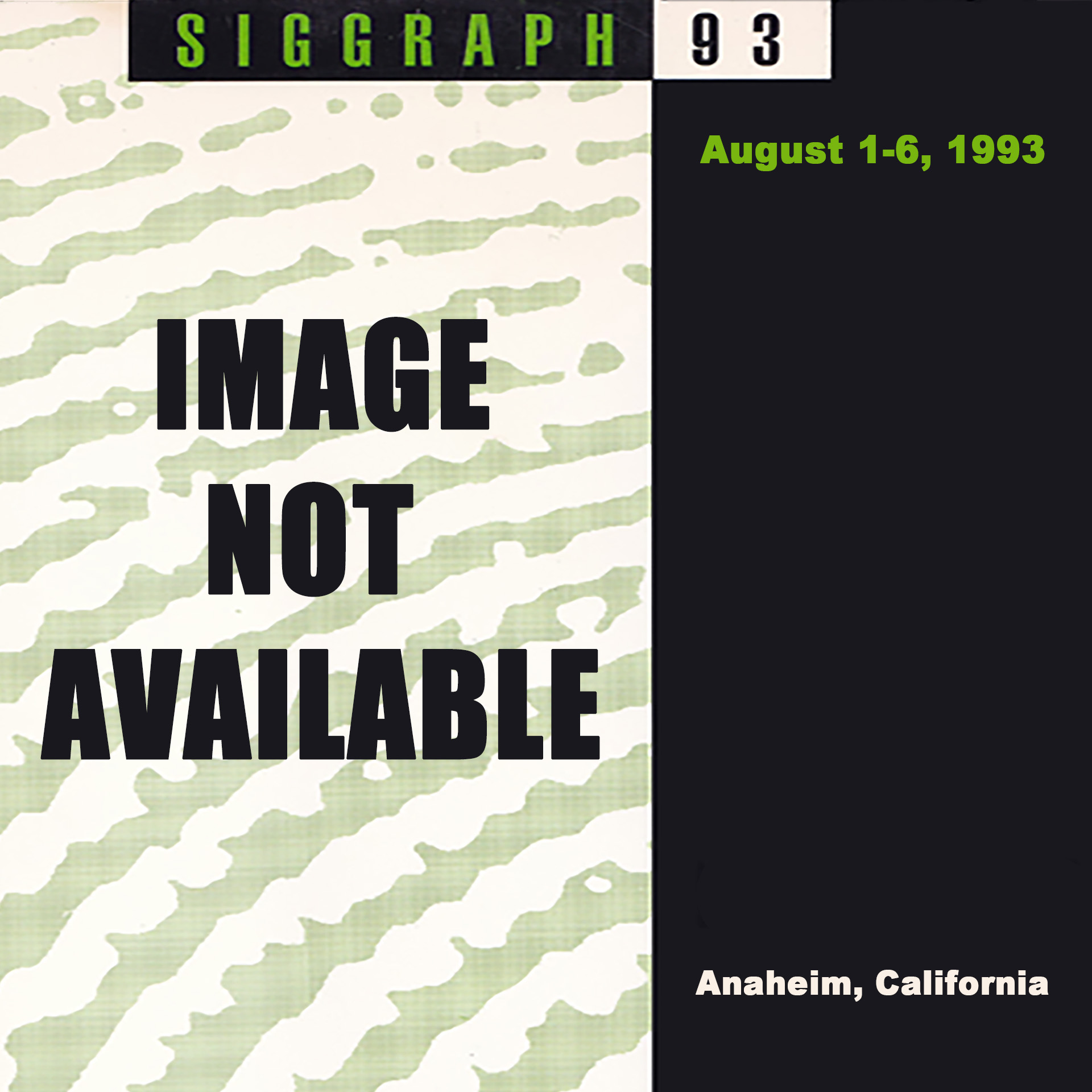“Display of the earth taking into account atmospheric scattering” by Nishita, Sirai, Tadamura and Nakamae
Conference:
Type(s):
Title:
- Display of the earth taking into account atmospheric scattering
Presenter(s)/Author(s):
Abstract:
A method to display the earth as viewed from outer space (or a
spaceship) is proposed. The intention of the paper is application to
space flight simulators (e.g., reentry to the atmosphere) and the
simulation of surveys of the earth (comparisons with observations
from weather satellites and weather simulations); it is not for
geometric modeling of terrains and/or clouds viewed from the
ground, but for displaying the earth including the surface of the
sea viewed from outer space taking into account particles (air
molecules and aerosols) in the atmosphere and water molecules in
the sea.
The major points of the algorithm proposed here are the
efficient calculation of optical length and sky light, with lookup
tables taking advantage of the facts that the earth is spherical, and
that sunlight is parallel.
References:
1. J.F. Blinn, “Light Reflection Functions for Simulation of Clouds and Dusty Surfaces,” Computer Graphics, Vol. 16, No. 3 (1982), pp. 21-29.
2. A. Fournier, “A Simple Model of Ocean Waves,” Computer Graphics, Vol. 20, No. 4 (1986), pp. 75-84.
3. H.R. Gordon, “Simple Calculation of the Diffuse Reflectance of the Ocean,” Applied Optics, Vol. 12, No. 12 (1973), pp. 2803-2804.
4. J.T. Kajiya, “Raytracing Volume Densities,” Computer Graphics, Vol. 18, No. 3 (1984), pp.165-174.
5. R V Klassen, “Modeling the Effect of the Atmosphere on Light,” ACM Transaction on Graphics~ V ol. 6, No. 3 (1987), pp. 215-237.
6. LINKS Corporation, leaflet of”LINKS CG LIBRARY”, (1991).
7. G.A. Mastin, P .A. W atterberg, and J.F. Mareda, “Fourier Synthesis of Ocean Scenes,” IEEE Computer Graphics & Applications, Vol. 7, No. 3 (1987), pp. 16-23.
8. N. Max, “Light Diffusion through Clouds and Haze,” Graphics and Image Processing, Vol. 33, No. 3 (1986), pp.280-292.
9. McCluney, W.R. “Ocean Color Spectrum Calculations.” Applied Optics, Vol. 13, No. 10 (1974), pp. 2422-2429.
10. N.G. Jerlov, “Optical Oceanography,” Elsevier, Amsterdom (1968).
11. T. Nishita, K. Kaneda, E. Nakamae, “A Scanline Algorithm for Displaying Trimmed Surfaces by Using B6zier Clipping,” The Visual Computer, Vol.7, No.5 (1991) pp.269-279.
12. T. Nishita, Y. Miyaw aki, E. Nak amae, “A Shading Model for Atmospheric Scattering Considering Distribution of Light Sources,” Computer Graphics, Vol. 21, No. 4 (1987), pp. 303-310.
13. T. Nishita, E. Nakamae, “Continuous tone Representation of Three-Dimensional Objects Illuminated by Sky Light,” Computer Graphics, V ol. 20, No. 4 (1986), pp. 125-132.
14. T. Nishita, E. Nakamae, “Half-Tone Representation of 3D Objects with Smooth Edge by Using a Multi-Scanning Method,” J. Information Processing (in Japanese), Vol. 25, No.5 (1984), pp.703-711.
15. K. Sato, “Fractal Graphics,” Rassel Co.(in Japanese) (1989) p.74
16. S. Sekine, “Optical characteristics of turbid atmosphere,”J Illum Eng Int Jpn, Vol. 71, No. 6, (1987) pp. 333.
17. P.Y. Ts’o, B. A Barsky, “Modeling and Rendering Waves: Wave-Tracing Using Beta-Splines and Reflective and Refractive Texture Mapping,” ACM Tr ansactions on Graphics, Vol. 6, No. 3 (1987), pp. 191-214.
18. W.M. Cornette, J.G. Shanks, “Physical reasonable analytic expression for the single-scattering phase function,” Applied Optics, Vol. 31, No.16 (1992), pp.3152- 3160.




